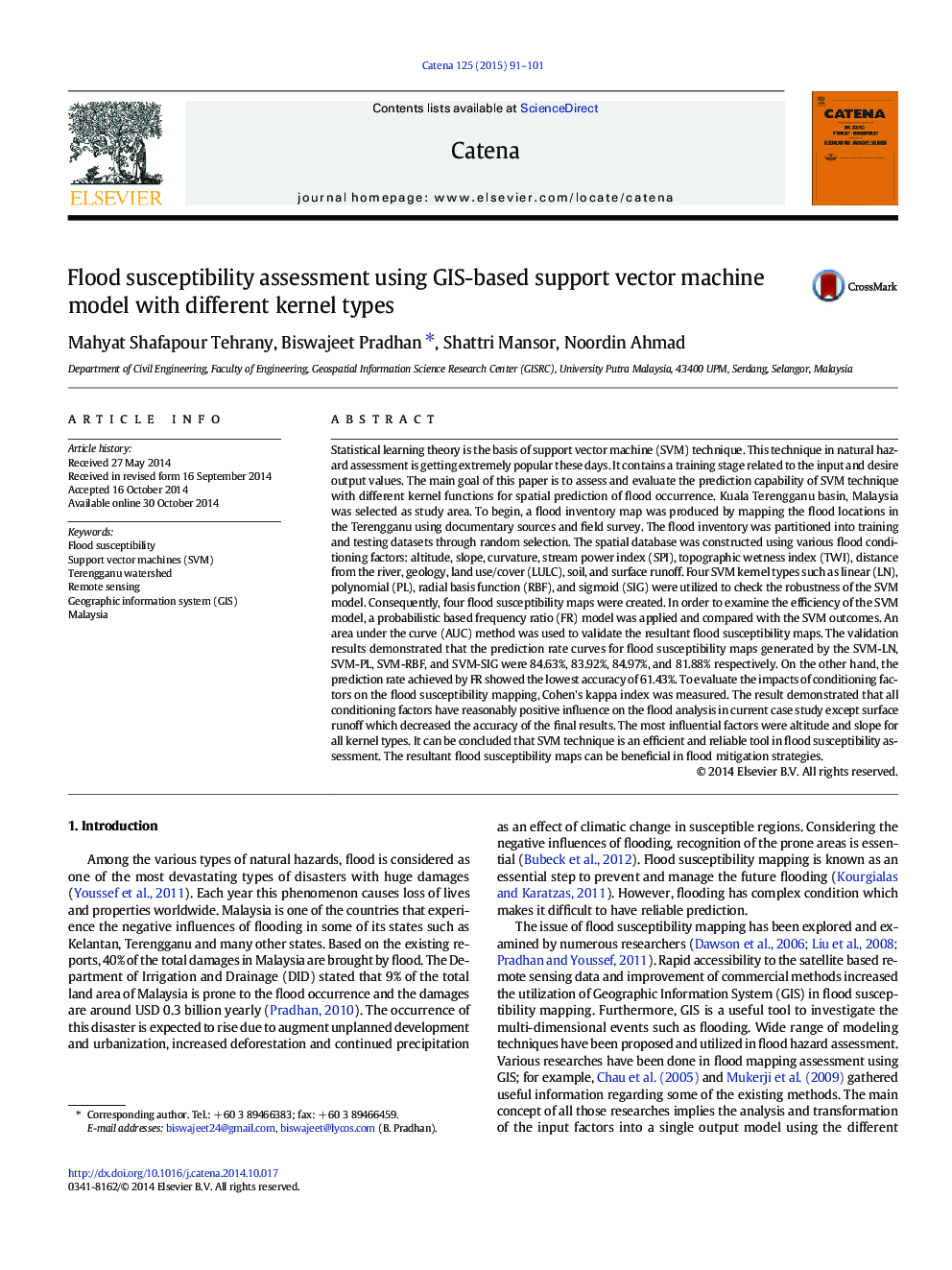| کد مقاله | کد نشریه | سال انتشار | مقاله انگلیسی | نسخه تمام متن |
|---|---|---|---|---|
| 4571281 | 1629227 | 2015 | 11 صفحه PDF | دانلود رایگان |

• The efficiency of the support vector machine (SVM) was examined in flood mapping.
• The impacts of four SVM kernel types in susceptibility mapping were compared.
• Area under the curve (AUC) method was used to assess the derived maps.
• Most influencing conditioning factors on flood were recognized.
• The proposed method was found reasonably useful for flood modeling.
Statistical learning theory is the basis of support vector machine (SVM) technique. This technique in natural hazard assessment is getting extremely popular these days. It contains a training stage related to the input and desire output values. The main goal of this paper is to assess and evaluate the prediction capability of SVM technique with different kernel functions for spatial prediction of flood occurrence. Kuala Terengganu basin, Malaysia was selected as study area. To begin, a flood inventory map was produced by mapping the flood locations in the Terengganu using documentary sources and field survey. The flood inventory was partitioned into training and testing datasets through random selection. The spatial database was constructed using various flood conditioning factors: altitude, slope, curvature, stream power index (SPI), topographic wetness index (TWI), distance from the river, geology, land use/cover (LULC), soil, and surface runoff. Four SVM kernel types such as linear (LN), polynomial (PL), radial basis function (RBF), and sigmoid (SIG) were utilized to check the robustness of the SVM model. Consequently, four flood susceptibility maps were created. In order to examine the efficiency of the SVM model, a probabilistic based frequency ratio (FR) model was applied and compared with the SVM outcomes. An area under the curve (AUC) method was used to validate the resultant flood susceptibility maps. The validation results demonstrated that the prediction rate curves for flood susceptibility maps generated by the SVM-LN, SVM-PL, SVM-RBF, and SVM-SIG were 84.63%, 83.92%, 84.97%, and 81.88% respectively. On the other hand, the prediction rate achieved by FR showed the lowest accuracy of 61.43%. To evaluate the impacts of conditioning factors on the flood susceptibility mapping, Cohen's kappa index was measured. The result demonstrated that all conditioning factors have reasonably positive influence on the flood analysis in current case study except surface runoff which decreased the accuracy of the final results. The most influential factors were altitude and slope for all kernel types. It can be concluded that SVM technique is an efficient and reliable tool in flood susceptibility assessment. The resultant flood susceptibility maps can be beneficial in flood mitigation strategies.
Journal: CATENA - Volume 125, February 2015, Pages 91–101